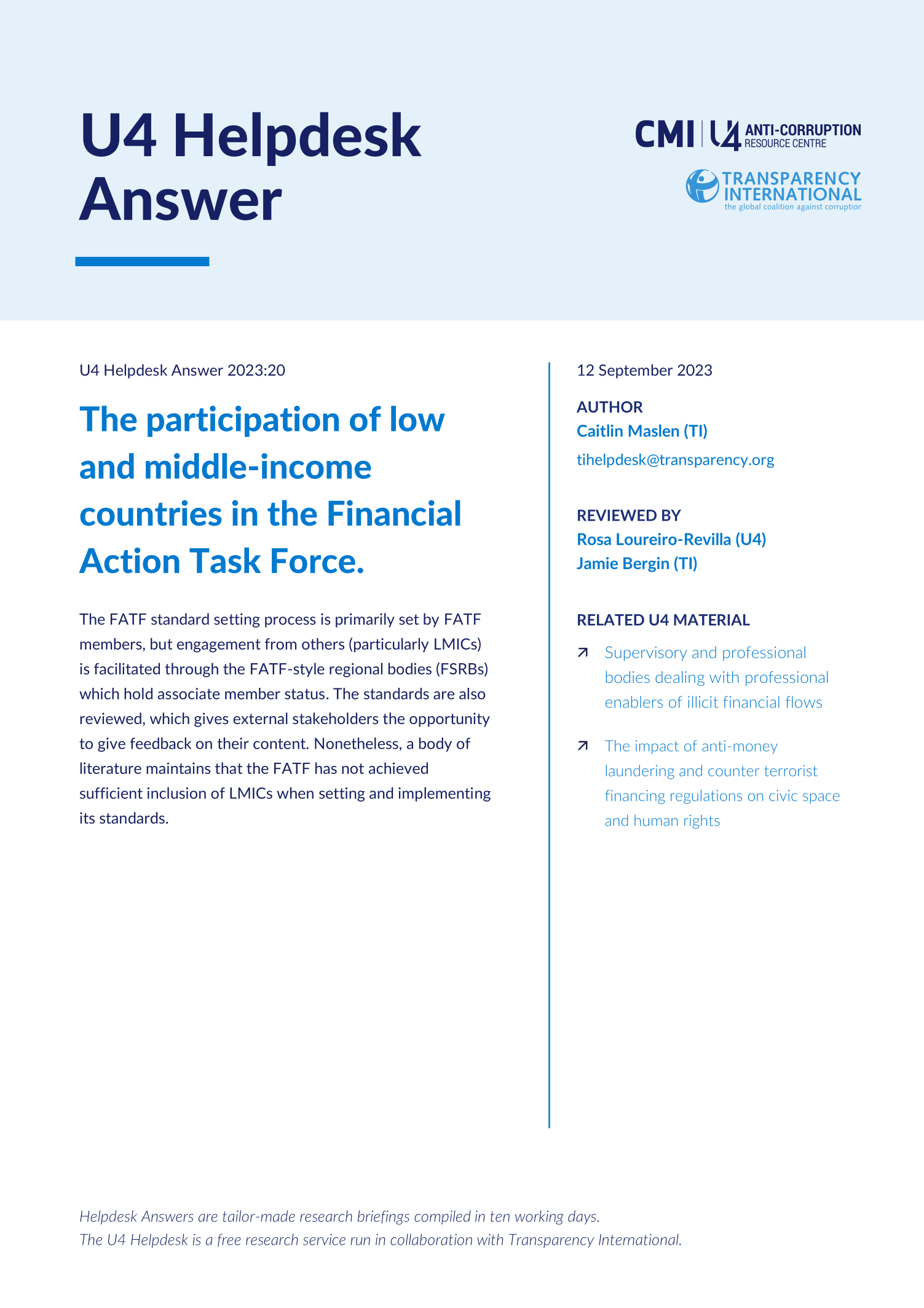Main points
- The FATF‘s members consist primarily of higher income countries, and participation of most lower and middle-income countries in its standard setting process is through the FATF-style regional bodies (FSRBs).
- This, as the FATF states, enables LMICs to influence the development of FATF standards and participate in FATF mutual evaluations (FATF 2019 a), which assess the compliance of countries’ AML/CTF measures with the FATF Recommendations. This process can carry significant implications, including influencing FATF’s decision to identify a jurisdiction as one under increased monitoring (the “grey list”) or a high-risk jurisdiction subject to a call for action (“the black list”).
- However, a limited body of literature contends that the FATF is not transparent in the precise level of influence the FSRBs have over the standard setting and review process. Some argue that the FATF is still largely driven by the agenda of higher income countries.
- Recommendations put forward include increasing transparency in the process of grey or black listing a jurisdiction, giving greater consideration to lower capacity of lower and middle-income countries and enabling stronger rights of LMICs in the FATF Plenary.


